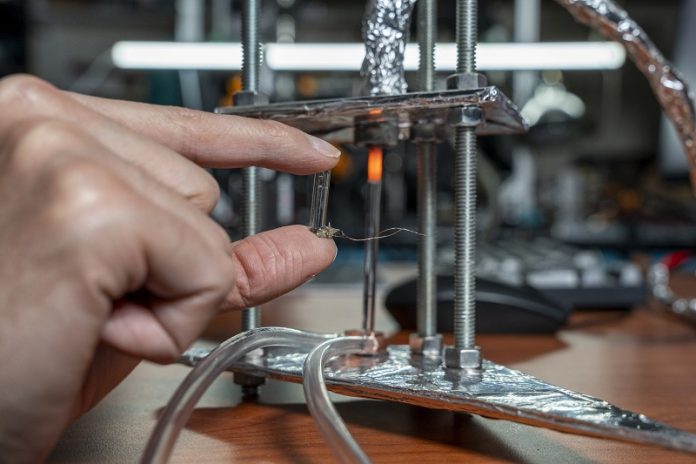
A team of engineers and scientists at the University of Colorado Boulder (CU Boulder) has created a groundbreaking technology that turns waste heat into electricity in a way that challenges a fundamental law of physics.
This new technology, developed by the Cui Research Group, could change the way industries generate power.
It allows for energy production without requiring extremely high temperatures or expensive materials.
The team, working alongside researchers from the National Renewable Energy Laboratory (NREL) and the University of Wisconsin-Madison, recently published their findings in Energy & Environmental Sciences.
Every day, a massive amount of energy is lost as heat. In fact, two-thirds of all energy we use ends up as waste heat.
Imagine if we could capture that heat and turn it into electricity—that’s exactly what Assistant Professor Longji Cui and his team are working on.
“Heat is an overlooked renewable energy source,” Cui explained. “By converting waste heat into electricity, we can create clean energy without relying on fossil fuels.
This could be a game changer for industries that need large amounts of power, such as manufacturing and renewable energy plants.”
The team focused on thermophotovoltaic (TPV) technology, which has been used to convert heat into electricity for a long time.
However, TPV systems have always been limited by a fundamental rule of physics called Planck’s law, which defines how much thermal energy can be extracted from a heat source.
Many scientists have tried to get around this limit, but previous methods were expensive, complex, and difficult to scale up for widespread use.
That’s where Cui’s team made a breakthrough. By creating a compact TPV device that fits in the palm of a hand, they managed to double the power output of traditional TPV systems while breaking past the limit set by Planck’s law.
Instead of using a vacuum or gas-filled gap between the heat source and the solar cell (as seen in typical TPV devices), Cui’s team used a special glass spacer. This glass is highly transparent to infrared light, allowing heat energy to pass through efficiently without losing strength.
This design creates a high-power-density channel that drastically improves electricity generation. And the best part? Glass is inexpensive and widely available, making this new TPV device more affordable than previous models.
“Most researchers focus on improving efficiency,” Cui said. “But we wanted to increase power. Our new design allows us to generate the same amount of electricity at a lower temperature, making it safer and more compatible with industrial systems.”
This breakthrough could have a major impact on industries that use high-temperature processes, such as steel, glass, and cement manufacturing. These industries produce large amounts of heat, much of which is wasted. With this new TPV device, companies could capture and reuse that heat to generate power, reducing carbon emissions and energy costs.
Additionally, the device could be useful for portable power generators, providing clean electricity in remote locations.
Cui and his team are already looking ahead. They believe that using other inexpensive materials, such as amorphous silicon, could increase power generation even further—by nearly 20 times!
The team has filed a patent for their technology and is excited to see how it can be used in real-world applications.
“This is just the beginning,” said Ph.D. student Mohammad Habibi, who led both the theoretical and experimental work on the project. “We are eager to explore new materials and ways to improve power generation.”
With this innovation, wasted heat could soon become a valuable source of clean electricity, helping industries reduce costs and carbon emissions while generating sustainable power.



